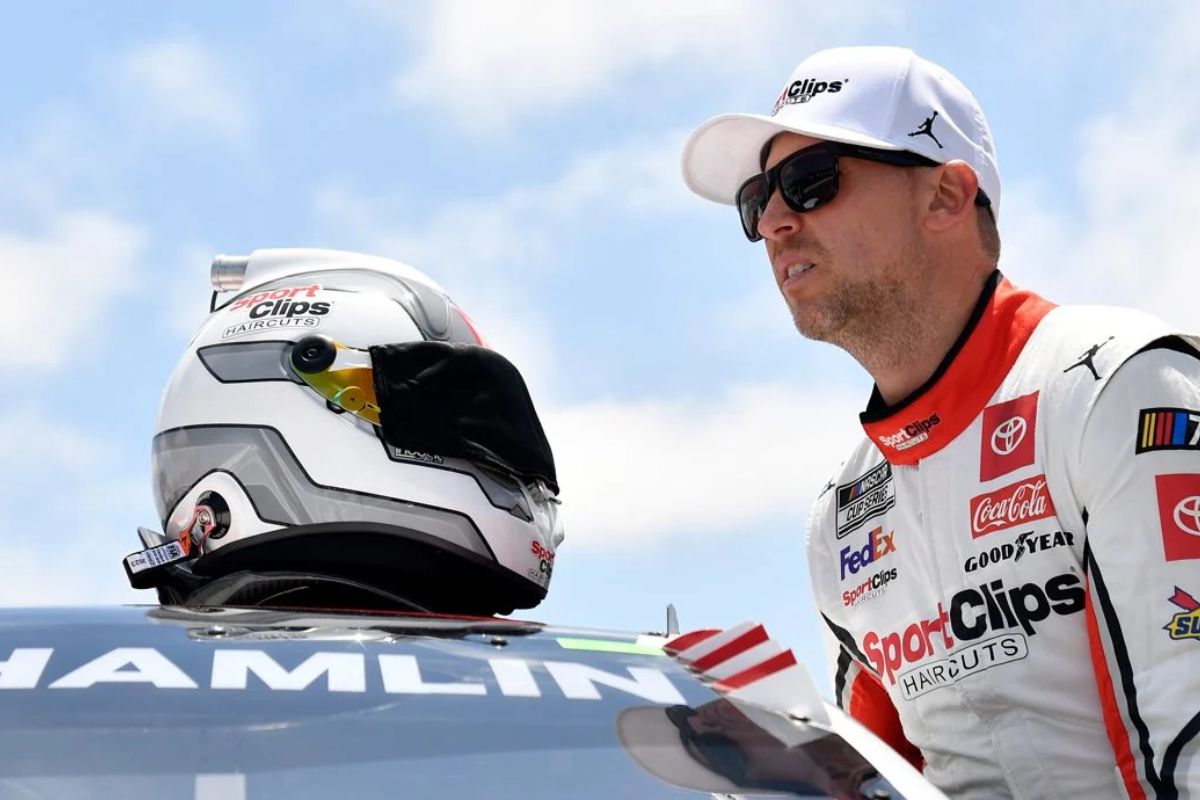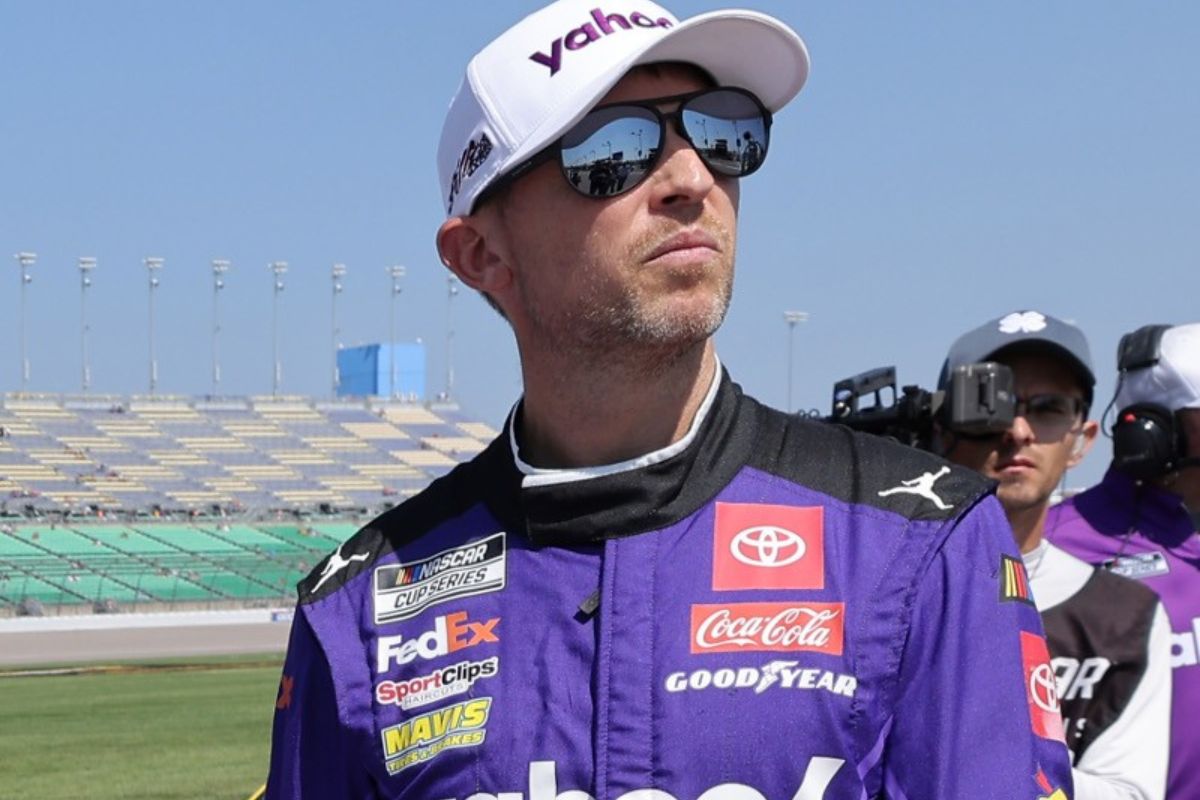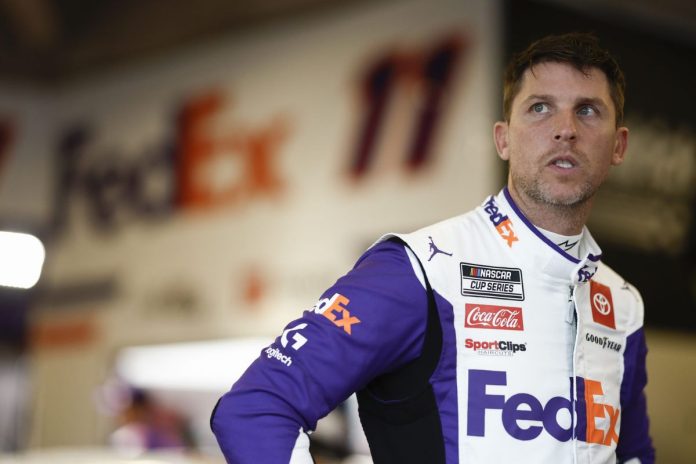Hamlin’s Texas Outrage: In the aftermath of the recent NASCAR event at Texas Motor Speedway, Denny Hamlin’s vocal criticism concerning the administration of caution periods has sparked a significant debate over the governance of race officiating. His concerns highlight a broader issue: the balance between maintaining safety and preserving the competitive integrity of the sport. As Hamlin calls for increased transparency and consistency from NASCAR’s decision-makers, the controversy invites us to ponder the potential consequences for future races. Will this incident lead to a reevaluation of race management protocols, or is it merely a momentary blip in the long season?
Key Takeaways
- Denny Hamlin criticizes NASCAR’s governance and transparency after the Texas race.
- Hamlin questions the fairness of caution calls affecting race outcomes.
- Late-race cautions in Texas benefited specific drivers, sparking controversy.
- Hamlin calls for a revision of track conditions and caution protocols at Texas Motor Speedway.
- The debate intensifies over NASCAR’s decision-making and its impact on competitive balance.
Denny Hamlin’s Blunt Assessment of Texas Race
Denny Hamlin, renowned for his forthrightness, expressed sharp criticism regarding the integrity of the racing results at Texas Motor Speedway, particularly highlighting the undue advantage he believes some drivers gained from timely race cautions. His pointed remarks show a broader discussion on the dynamics of race strategy and the elements of chance that can skew competitive balance in motorsports.
Hamlin’s critique centers on the deployment of caution flags, which are used in NASCAR to signal a notable suspension of racing, typically due to an on-track incident. These cautions can greatly alter race outcomes by compressing the field and allowing teams to make strategic pit stops without losing ground to competitors. For a seasoned driver like Hamlin, whose race strategy is based on a combination of skillful driving and tactical planning, the timing and frequency of cautions can be a controversial issue, particularly when they appear to benefit certain drivers disproportionately.

Issues with Top Finishers and Caution Timing
In the race of AutoTrader EchoPark Automotive 400 at Texas, Hamlin aimed to win but his move to pass Elliott in overtime failed, causing him to spin out and finish in 30th place. However, on the podcast, Hamlin focused on something else. He talked about how some drivers who didn’t perform well capitalized on caution periods to finish near the top. Hamlin knows it’s just how racing goes, but he wasn’t too pleased about it.
Analyzing the race, it’s clear that the advent of a caution can serve as a lifeline for drivers lagging behind, offering them an undeserved advantage. It allows teams to make pivotal pit stops, adjust strategies, and regain ground lost during the race’s natural progression. This disrupts the competitive integrity, as drivers who have demonstrated superior skills and consistency throughout the race may find their efforts negated in an instant.
“You know, you look at the finishing results, there were some lucky people. There were some people that got lucky with that last caution. They went long, the caution came out, they got to pit and it flip-flopped the field. And the reason why it flip-flopped the field is Reddick got out to such a huge lead during that run and then I had such a big lead over third…when we pitted, we unlapped ourselves, the caution comes out, there was about six of us that were on the lead lap when the caution came out even though the cars hadn’t pitted.”
“So then all those cars that were just desperate…if you look at half of the top 10, these were cars that were s**t all day, they were terrible.” Denny
Hamlin didn’t stop there. He also criticized the Texas Motor Speedway, a track that’s been under fire since its repaving in 2017. Hamlin, like many others, voiced his disapproval, calling out what he sees as one of NASCAR’s biggest mistakes in 2019.
Texas Motor Speedway’s Ongoing Challenges
Texas Motor Speedway has faced persistent challenges since its repaving in 2017, particularly with problematic traction in turns 1 and 2 and an uneven surface in turns 3 and 4. The track, originally praised for its high-speed capabilities and engaging layout, has come under scrutiny for these ongoing surface issues, which notably impact the race dynamics and safety.
The application of the PJ1 traction compound was intended to enhance grip in the turns, yet it has introduced variability in track conditions. The inconsistency in traction not only affects race strategy but also complicates tire management, a crucial component in racing. Drivers and teams are often left guessing how the surface will react, especially under changing weather conditions.
Turns 3 and 4 present a different challenge due to the unevenness of the track. This irregularity can cause sudden loss of control for vehicles, leading to safety concerns. Such conditions demand high adaptability from drivers and can lead to unexpected race incidents.

Call for Track Overhaul
In light of ongoing safety and performance issues, Hamlin’s recent call for a thorough overhaul of Texas Motor Speedway has shown the urgent need for structural and surface improvements to enhance the racing experience. His focus on highlighting particular track issues, notably the challenging high line and the uneven track surface, shows a critical moment for the track’s operational credibility and its effects on racing standards.
The high line at Texas Motor Speedway presents a formidable challenge, often characterized by less grip and an increased risk of accidents. This area of the track, important for overtaking maneuvers and strategic racing, demands precise engineering reevaluations to guarantee that it meets the necessary safety parameters without compromising the competitive nature of races. Hamlin’s critique invites a reassessment of the track’s current composition and the potential benefits of advanced materials and technologies in track surfacing.
Moreover, the uneven nature of the track surface amplifies these concerns, suggesting a broader scope of renovation that extends beyond mere resurfacing. It necessitates a thorough analysis of the track foundation and substructures, proposing that improvements should include a systematic overhaul rather than minor adjustments.
Debate Over Track Changes
Hamlin’s critical comments have ignited a robust debate among NASCAR enthusiasts about the necessity and scope of proposed changes at Texas Motor Speedway. While some stakeholders align with Hamlin, suggesting that the track’s current configuration might compromise safety and competitive fairness, others maintain that the existing setup provides a unique challenge that should be preserved.
This debate is not merely about preference but revolves around fundamental aspects of race strategy and driver skills. Supporters of change contend that the track’s design, especially its banking and surface characteristics, unfairly impact vehicle performance, potentially influencing race outcomes. On the other hand, traditionalists believe that these very challenges test a driver’s adaptability and technical ingenuity.

News in Brief: Hamlin’s Texas Outrage
Denny Hamlin’s vocal criticisms following the Texas Motor Speedway event show significant concerns regarding NASCAR’s race management and the need for consistent officiating.
The controversy highlights broader issues within the sport, including the influence of caution timing on race outcomes and the overall integrity of competition.
These debates give rise to a pivotal reevaluation of track standards and officiating transparency, potentially guiding future reforms to enhance fairness and maintain competitive balance in NASCAR.
Also Read: Hamlin Exposes JGR’s 1M Dollar Waste: Calls for Action


